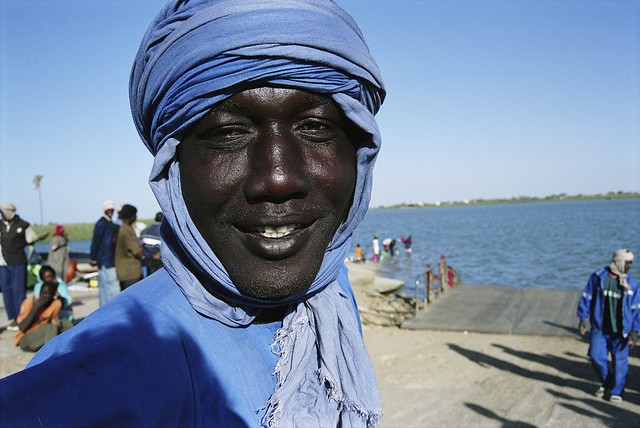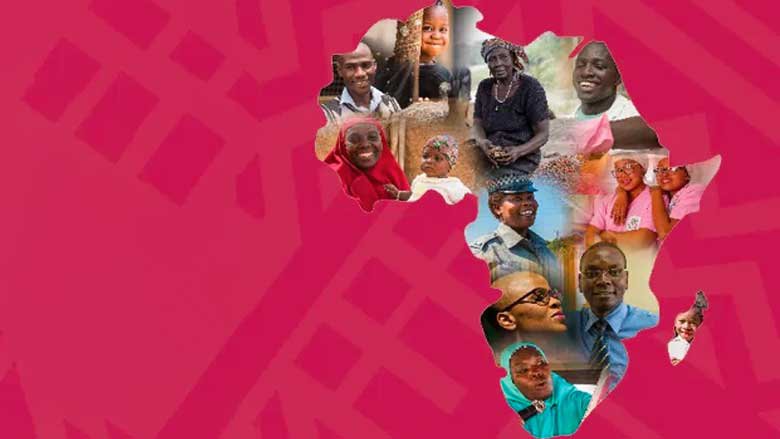Education
To improve access to quality education for all children, the World Bank has supported education reforms in Madagascar through the which ended in December 2024 and benefited more than 4 million Malagasy children. The project enhanced early learning outcomes, increasing the percentage of grade 2 students able to read age-appropriate texts from 22% in 2018 to 37% in 2024, while promotion rates in targeted schools rose from 45% to 57.5%. Key interventions included the introduction of a student-centered teaching approach through structured pedagogy, curriculum reforms, and the training of over 124,000 Malagasy teachers in foundational learning. The project also provided textbooks to 2.7 million Malagasy children to support the implementation of the curricular reform and improved infrastructure by building 800 cyclone-resistant classrooms, installing 820 water points, and establishing 1,000 early learning centers. Additionally, school health interventions (the distribution of vitamins, folic acid, and iron) benefited all primary students, and 50,000 children in the South received school meals. To strengthen school management, 5,000 principals received professional training, 17,000 school personnel were equipped with tablets for distance learning, and schools were allocated four years of financial support. Building on these achievements, the upcoming Transforming Access and Learning in Madagascar Project (P506569) (AIM4Learning MPA) will further enhance teachers’ working conditions and qualifications through training, continue building cyclone-resistant school infrastructure, and support institutional and technical capacity building to ensure further sustainable reforms in the education sector.
Health, Nutrition & Population
To combat malnutrition, more than two million people have benefited from health and nutrition services, and 4,500 community health and nutrition sites are operational. A total of 1,081 primary healthcare facilities were also provided with necessary nutrition and health commodities and equipment. Based on a 2021 Demographic and Health Survey, stunting decreased from 42% to 39.8% nationally between 2018 and 2021, and specifically from 51% to 48% in the eight regions targeted by the Improving Nutrition Outcomes using the Multiphase Programmatic Approach (MPA) Project. This improvement is even more significant in the five regions that were enrolled in the program in 2019 and 2020, from 55% to 49%.
Social Protection
The Social Safety Net Project in Madagascar, which closed on October 31, 2024, has supported 5[DS1] .4 million people since the project began, with women accounting for 74% of direct beneficiaries. Among Human Development Cash Transfer households, 94% of school-age children attend school regularly, and almost 500,000 children under age five have benefited from nutrition services. In 2023, Madagascar launched its Social Registry, which will improve beneficiary targeting, program coordination, and response to climatic shocks. The , which became effective in August 2023, is scaling up coverage of extremely poor households (2.4 million people supported to date) and promoting improved livelihoods of social assistance beneficiaries to reduce over time the need for support.
Environment
Madagascar is one of the world’s 36 biodiversity hotspots, home to 11,698 plant species and 417 animal species, with 89% found nowhere else. However, many are at risk of extinction. To combat deforestation and boost forest carbon stocks, Madagascar launched the , funded by the . This results-based initiative earned the country an $8.8 million payment for cutting 1.76 million tons of carbon emissions in 2020. The second emissions verification (2021–2022) is underway, with a third one planned for 2023–2024.
欧美日b大片 also supports Madagascar’s , promoting ethanol stove adoption while helping the government transition from the Kyoto Protocol to the Paris Agreement. This includes establishing a carbon market governance system by assisting Madagascar in setting up the Designated National Authority (DNA) and improving legal frameworks for carbon projects under Article 6. Through this support, the government has drafted updated legal documents to align with the Paris Agreement.
Social Development
The focuses on building resilience through multi-sectoral development, local governance, infrastructure, and livelihoods to help communities cope with environmental and economic challenges. So far, the project has provided essential services and infrastructure to 779,389 people, including 418,982 women and 259,954 youth. About 26% of beneficiaries reported improved livelihoods. The project has strengthened local governance by providing solar panels to 150 communes, training 134 community-level monitors for climate hazard alerts, and helping 121 communes set up local development plans. As regards infrastructure, 121 communes have received funding for local projects, the Mandrare-Sampona water pipeline is 89% complete and expected to be operational by mid-2025, and construction is ongoing for 12 small water systems with desalination units. A comprehensive inventory of 4,000 water points has guided the rehabilitation of 400 multi-use water points, with 163 currently in progress. As regards sustainable livelihoods, 73,435 people, including 38,480 women and 33,680 youth, benefited from agricultural and marine-based income programs. The project developed 15 priority value chains, including agriculture, livestock, and fishing, and established 557 farmer field schools. Over 500 savings and credit groups were created to improve financial access, and 10,000 farmers were introduced to sweet potato farming and agro-processing, supporting 50 SMEs. Additionally, 77,088 schoolchildren received nutritious meals through the school feeding program, and 514 producer groups were supported to supply the program. Environmental efforts included reforesting 225 hectares, stabilizing 2,073 hectares of sand dunes, and establishing 25 km of windbreaks. In response to the 2021 drought, a $12 million emergency fund provided water and food aid to 259,000 and 344,460 people, respectively, and upgraded 70 water points to multi-use systems, benefiting 33,689 individuals.
Jobs
The series of Madagascar Integrated Growth Poles Projects have supported the development of the private sector in Madagascar in the targeted regions and in the tourism, agribusiness and digital sectors. More than $80 million of private investments were enabled, and more than 40,000 formal jobs were facilitated from project activities. In terms of direct support to firms, more than 800 startups and small and medium-sized enterprises (SMEs) benefited from technical assistance as well as financial resources to support their growth and expansion. More than 40,000 agricultural producers working in selected cash crops or aquaculture have been supported by the projects to improve their productivity and market access. The projects also contributed to an increase in the value of exports from the main agribusiness value chains supported (including cocoa, pink pepper, sea cucumber, seaweed, (cape) peas, vanilla, and honey). The smallholders supported by the projects in these value chains saw a 35% increase in their revenues. The fourth iteration of the series is currently implemented under the It has recently launched a new wave of the entrepreneurship program (MIARY) to support new businesses in the sectors of tourism, agribusiness, and digital activities in the 9 target regions.
Energy
Thanks to the recently concluded the "Matselaka" electricity customer management system is now fully operational nationwide, and 8,500 smart meters have been installed. The project also funded the construction and rehabilitation of 320 km of distribution and transmission lines, enhancing the quality of the network. As a result, overall network losses decreased from 35% to 28% between 2016 and 2022. With the Least-Cost Electricity Access Development Project (LEAD), vulnerable households and small businesses near the national electricity company (JIRAMA) grids can apply for an affordable electricity connection with significantly reduced waiting times. This densification of the network program locally referred to as Branchement Mora has connected 200,000 households across the country. The connection charge, normally 500,000 ariary ($106), has been reduced to 30,000 ariary ($6), 16 times more affordable. The LEAD Project fully covers the cost of new and upgraded connections, including materials and installation. Additionally, the project supports the expansion of the JIRAMA electricity grid, financing the installation of 1,500 kilometers of medium- and low-voltage lines to serve more households and small businesses. It has also provided electricity access to 500 basic health centers. To further promote energy access, the , established to support private sector deployment, has funded 303,000 new connections, benefiting nearly 1.5 million people. Building on this progress, the DECIM Fund ($97 million), launched in January 2025 under the , will support the private sector in scaling up these efforts.
Transport
The recently completed the upgrade and paving of a 113-km section of the Route Nationale 44, benefiting around 110,000 people. Travel time has been reduced from 8 hours to 2 hours between Marovoay and Vohidiala, with the road now accessible year-round, thanks to its new pavement, drainage system, and bridges. This road is crucial for the Alaotra-Mangoro region, Madagascar’s rice granary. Farmers now enjoy higher profits by reaching Ambatondrazaka, the region's capital, where they can secure better prices—up to three times more than before. The local population now also has better access to basic services like healthcare and education since the road serves 65 schools and 14 health centers.
The project also built a 220-meter bridge over the Manambondro River on Route Nationale 12A, connecting an agriculturally rich but isolated region (rice, cloves, litchi, etc.) to the strategic port of Fort-Dauphin in the south-east of the country. The previous road was in poor condition, making travel difficult and slow, even during the dry season. Isolation is worsened by the absence of bridges over the ten rivers crossed by the road. This lack of bridges led to delays and unsafe crossings on small ferries. The new bridge therefore significantly improves safety, reliability, and travel time, benefiting the local population's access to essential services and markets.
Last Updated: Apr 01, 2025








